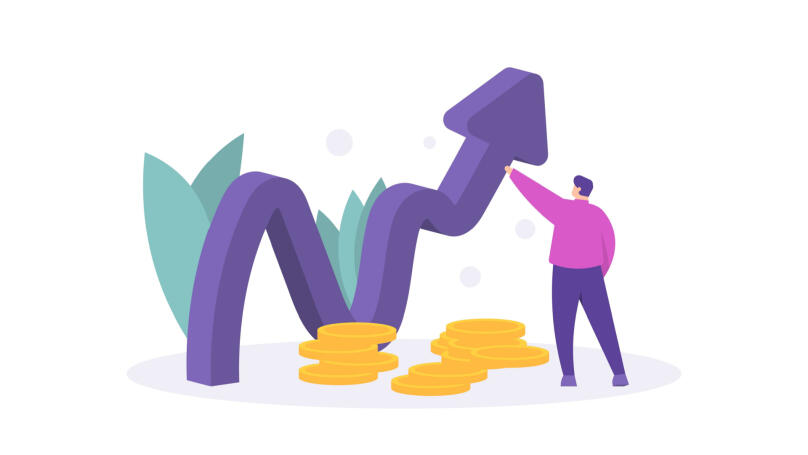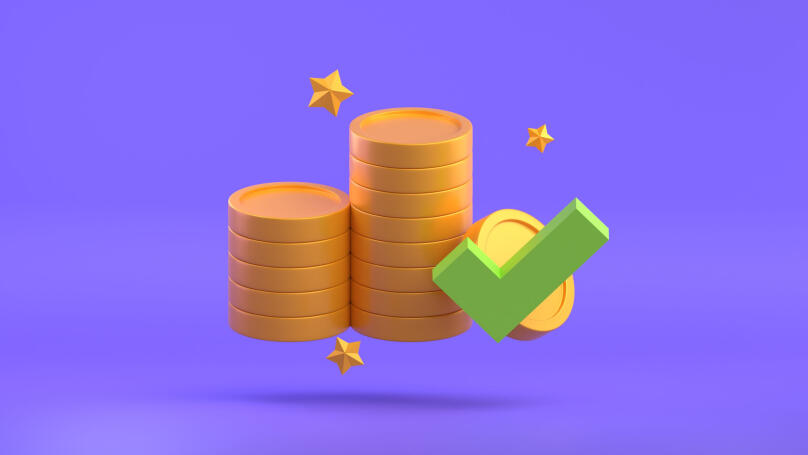Revenue management

What is revenue management?
Revenue management is the practice of using data and analytics to predict demand, primarily used in the hospitality industry. The definition also includes adjustments to pricing to increase the revenue from the company's business operations. The meaning of this concept can be summed up in one concise statement: you are selling the right product to the right customer at the right time and at the right price. The correct price, in this case, depends on the customer's needs and not on the product's characteristics.
The most common use of analytics in revenue management is in industries with high fixed costs, such as travel and hospitality.
Why is revenue management important?
Revenue management is primarily a way for a company to maximise revenue using big data analytics and advanced software. This allows you to anticipate market demand and respond almost instantly to changing circumstances. That is why the correct use of the elements of the revenue management process is crucial for the hotel industry, tourism and other areas of business development that need it most.
Revenue management vs Yield management

Yield management is different from revenue management. The purpose of revenue management is to control the situation in the market and be able to change the approach to pricing in time. Revenue management is broader than yield management. The latter focuses on managing inventories, company assets that can bring profit, their redistribution, write-offs, depreciation, and so on. Some people bring yield management into the competence of the revenue manager, but there is no consensus on this matter in the labour market.
History of revenue management
It is believed that revenue management first appeared among financiers and airline managers. They tried to maximise their earnings by filling as many seats as possible on each flight. Therefore, companies needed to come up with a revenue management system that predicted how many passengers who bought or booked a ticket would actually arrive at the airport and board the plane.
In the 1970s, airlines began experimenting with pricing, giving discounts to passengers who booked tickets in advance and introducing new fares. In 1972, British Airways introduced the first official revenue management rule: discounted fares would be offered if the revenue from them exceeded the expected revenue from full fares. In 1978, American airlines adopted revenue management tactics from their British counterparts. The market became free: public services or the state no longer controlled it, which changed the rules of the game. However, the first materials about how revenue management works, what kind of lifecycle of problem-solving a manager dealing with this issue goes through, and which industries the technology appeals to, appeared in the late 1980s.
Revenue management process

The revenue management process depends on the following conditions:
-
How many resources are available for sale at any given time. This number must be fixed.
-
How perishable resources are. After a certain point in time, these resources can not be sold because they are considered spoiled.
-
How different the segments of the target audience (customers) are. Different customers must be willing to pay different prices for the same resources.
Hotel revenue management and the same process throughout the hospitality industry are broken down into five basic steps.
Step 1: competitive analysis
Strategic revenue management involves studying the main competitors, their ways of selling their products, their value proposition and other things that your business doesn't have yet. It's important to check if competitors offer anything that you don't have. Any competitors' idea can be adapted and used in your business. For example, a new hotel that opens near you may have a simplified billing system. Or they may offer special services for guests working in the consulting industry who return home late at night, and therefore need quality rest on weekends and are willing to pay big money for high-quality service.
At this stage, it is critical to identify the segments that affect company performance: are they international or domestic? Do they change by market segment? Does the business have customer potential, can it enter new markets? What channels of contact with the company do customers most often use?
Step 2: forecasting
Recurring revenue management requires you to pay close attention to your business goals and anticipate the steps you will take to reach them. To create a relevant forecast, you need to analyse competitors and results compared to previous periods and see how your employees work and what they spend the most of their time and your resources on. You can compare any indicators (but with each other, otherwise, it will be pointless). The key is to analyse the results of the comparison. Without this step, you will not be able to build revenue management forecasting that actually works.
Step 3: pricing
Once you have completed competitor analysis and forecasting strategies, you can proceed to pricing. Typically, pricing means setting seasonal tariffs and surcharges, as well as discounts and promotions. Don't stray too far from market averages - customers (at least in the hospitality segment) will avoid both too high and unnecessarily low prices.
Step 4: inventory management
This includes studying demand and its volume, forecasting its changes and purchasing provisions in accordance with demand. The objective here is to fulfil the tasks outlined at the forecasting stage.
Step 5: performance monitoring
The only thing left to do is observe how effective your solutions were and adjust them during the implementation process if necessary. Explore performance analysis, identify areas for improvement, and highlight areas of change that you can work on.
Revenue management forecasting
As we have already mentioned, forecasting is a tool that helps predict the future results of a business. It allows you to prepare for the onset of risk events and hedge risks. That is, you can find ways to mitigate the risk or find an option to supplement actions that will work in a risk event and consequently will not set the company back.
Why is forecasting important?
-
It allows you to understand how the company will work in the near future. And thanks to this, making decisions regarding a particular business change will be easier.
-
It helps to base the forecast on approximate key indicators that you expect to achieve by the end of the forecast period. The same applies to the revenue and occupancy forecast.
-
You will begin to make more informed financial decisions, which, in turn, will help you minimise risks.
-
You will have a better understanding of what to base marketing campaign messages on and will be able to navigate their metrics more easily.
Revenue management KPIs and metrics

KPIs are key performance indicators that allow you to assess the state of the company or its units/departments at the moment. Additionally, they help you correct the course in time, find a problem in work processes at its onset and not delay its solution.
What indicators and metrics are essential for revenue management in the hospitality industry?
-
RevPOR (Revenue Per Occupied Room). This includes income from the use of the bar, telephone, room service, laundry, food delivery, and so on. RevPOR = total occupied room revenue / number of occupied rooms.
-
TRevPAR (Total Revenue Per Available Room). This includes accommodation income and other expenses. TRevPAR = total revenue / total number of rooms.
-
NRevPAR (Net Revenue Per Available Room). This indicator is based on net revenue. NRevPAR = total revenue / total number of rooms.
-
ARPA (Annual Revenue Per Account). In some ways, the indicator is similar to LTV, customer lifetime value. ARPA = monthly recurring income / total number of accounts.
-
EBITDA (Earnings Before Interest, Taxes, Depreciation, and Amortization). An important financial indicator. EBITDA = total income - all expenses.
Revenue management strategies
Basic revenue management courses divide strategies into the following segments:
-
Market analysis strategy
We focus on the market analytics and other players in it. We study the source of demand, demographics, local influence factors, needs and expectations of the target audience.
-
Customer base segmentation strategy
We segment target audiences and evaluate their habits, the reasons why they buy a particular product, and the amount of money they can spend on your product.
-
The best pricing strategy in the market
You can undercut, and you can sell your product only to a wealthy audience. Nevertheless, your pricing strategy should be clear, understandable, and change very smoothly. Make sure the pricing doesn't jump too far out of the market.
-
Customer retention strategy
Any platform needs its own customer base. A customer base retention strategy can come in handy with product onboarding when buying a ticket on the site, gamification, and welcome messages in a chat on a website or in an email chain.
-
Mobile optimisation strategy
You can try to optimise your communication channels with customers for mobile versions - smartphones, tablets, etc. A large amount of traffic passes through a smartphone, therefore optimising the site and the ticket booking service is required.
Revenue management pricing strategies

The following pricing strategies exist in today's market:
-
Demand-based pricing
The cost of the room depends on the demand for it. You will need to analyse historical data on room occupancy, income by period, room rates and the average guest check. Think about when the next holidays are. What kind of demand surge can you expect? Are there universities near you? Are sports or cultural events coming up in your city?
-
Rate parity pricing
Rate parity means maintaining the same prices for rooms on all platforms where users can book them. This strategy allows you to gain the audience's trust and increase its loyalty. However, remember that third-party ticket booking resources may charge their own commissions, therefore there is a chance of losing money.
-
Occupancy-based pricing
You will need to study the occupancy level. The higher the level, the more customers you have, meaning the room price gets higher. This strategy can be complemented by automatic rate optimisation.
-
Pricing based on market segmentation
You can offer various market segments different discounts and rates to increase sales. Coupons, special offers, package rates - use all activation options.
Revenue management software and tools
Here we list the best revenue management tools in app format.
-
Duetto. This paid app uses a large amount of data to compose customer segments, analyse information and propose solutions. Intuitive but not available on smartphones.
-
IDeaS. It has been operating for over 30 years, automating most of the routine processes and predicting trends in the hospitality industry. This paid app knows how to take into account the position of competitors in the market and the demand for rooms. It is quite difficult to learn how to navigate the programme, but it's worth it.
-
Atomize. This simple app can optimise room prices in real-time and predict demand waves. However, it's not suitable for long-term forecasts. The app is paid.
-
Pace Revenue. This paid app knows how to adjust the price of rooms once an hour, but does not follow competitors. Yet, it predicts the volume of orders for a specific company. Working with the interface requires user training.
-
RoomPriceGenie. This paid application is for owners of small hotels or hotel chains. It works with dynamic pricing, updating prices several times a day. It's simple and beginner-friendly, but less advanced than the competitors mentioned above.
Best practices in revenue management
Which revenue management solutions are considered best practices in the industry?
The first is the use of artificial intelligence. The more you outsource, the better it will be for your employees. Collecting a large amount of data and analysing it should be offered to an AI-based app. The analytics carried out by the robot ensures that decisions are made based on correctly collected and sorted material.
The second is dynamic pricing. By basing prices on demand, you can stay as commercially viable as possible. Don't forget about special programmes, loyalty cards, promotions and discounts, if your customer segment allows you to use such activation methods. 75% of consumers prefer companies that offer both good quality rooms and promotional opportunities.
The third is booking via a smartphone. Many customers choose and book hotel rooms through smartphones, so it would be short-sighted to bypass this method of communication with the audience. Leading market players adapt their websites to mobile phones and earn extra money from this.
Conclusion
Revenue management is a process that every hotelier needs to know thoroughly. The better you manage revenue, the more accurately you can predict demand and competitor movements, and the easier it will be for you to work in the hospitality industry. Since its inception, revenue management has become a benchmark, an industry mark of excellence, and a managerial practice that can turn a money-losing business into a running hotel chain with thousands of guests.























